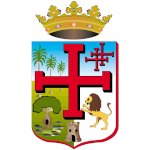Santa Cruz Day in Bolivia Date in the current year: September 24, 2026
 Santa Cruz Day is celebrated in the Bolivian department of Santa Cruz on September 24 each year. It was established to commemorate a popular revolt that took place in 1810 and was one of the many uprisings during the Bolivian war of independence.
Santa Cruz Day is celebrated in the Bolivian department of Santa Cruz on September 24 each year. It was established to commemorate a popular revolt that took place in 1810 and was one of the many uprisings during the Bolivian war of independence.Santa Cruz is the largest of Bolivia’s nine departments; it occupies about one-third of the country’s territory and is only slightly smaller than Japan. Santa Cruz is also one of the wealthiest departments in Bolivia due to its significant natural gas reserves and well-developed agriculture.
During the pre-Columbian era, the territory of what is now the city of Santa Cruz de la Sierra was inhabited by Chané, an Arawak-speaking tribe. The first Europeans to set foot in the area were Spaniards from New Andalusia Governorate that encompassed the territories of present-day Argentina, Chile, Paraguay, and Uruguay.
The first expedition aimed not just to explore, but to settle the region was led by Spanish conquistador Ñuflo de Chaves in 1558. Two years later, the Viceroy granted him permission to found a new province and become its governor. On February 26, 1561, Chaves founded the capital of the newly formed province, which he named “Holy Cross of the Hills” (Santa Cruz de la Sierra). European colonization enraged the Chané, who killed Chaves during one of the continuing conflicts with the Spanish.
The city was relocated several times due to attacks from local tribes and was finally consolidated in 1622. Remnants of the original settlement are now an archaeological site named “Old Santa Cruz” (Santa Cruz la Vieja).
Despite the city’s rather modest size, it was strategically important because it prevented Portuguese explorers (the bandeirantes) from traveling deeper into the Viceroyalty of Peru. Santa Cruz was also an important staging point for Jesuit missions. Due to its role, in enjoyed considerable autonomy and was exempt from taxes and mandatory public service.
The situation changed in the early 19th century, when the French Empire occupied Spain during the Peninsular War and began to reform its colonies. The seat of government was moved from Santa Cruz to Cochabamba, and the city lost most of its autonomy. Like in many parts of the viceroyalty, the local population revolted.
On September 24, 1810, a group of locals led by Antonio Vicente Seonane overthrew the governor delegate and replaced him with a junta. The revolutionaries were against the colonial authorities, but remained loyal to the King of Spain. The imperial forces retook Santa Cruz in 1813, but Argentina sent a small revolutionary force to liberate the city. Santa Cruz changed hands several more times after that until Bolivia finally became independent.
Santa Cruz Day was established to commemorate the revolt of 1810. It is a public holiday in the department of Santa Cruz, celebrated with parades, ceremonies, contests, and other festivities. The main celebration takes place at Plaza 24 de Septiembre in Santa Cruz de la Sierra, which was named after the revolutionary events of 1810.
- Category
- Anniversaries and Memorial Days
- Country
- Bolivia
- Tags
- Santa Cruz Day, holidays in Bolivia, holidays in Santa Cruz, public holidays, regional holidays